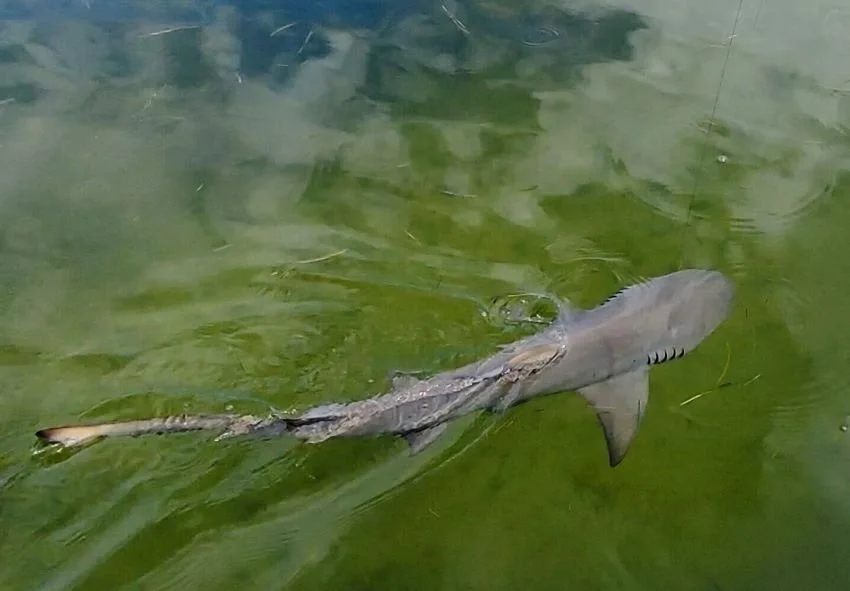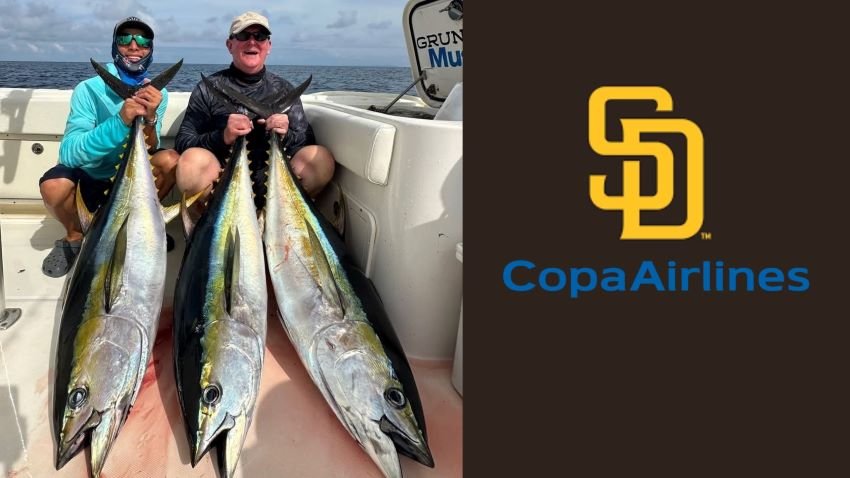Do We Need a Bigger Boat?
Did you know that sharks have been on earth longer than people?
Did you know there are only around 10 deaths per year attributable to sharks worldwide?
Did you know that today there are 465 known species of shark living in the world?
During our Islamorada, Florida fishing trip in May I caught SIX different species of sharks. I thought that was a lot. I mean I only fished three days and we weren’t targeting them.
When I did the math that means I only caught 0.01276595744680% of the world’s different species of sharks. Not as impressive as my strut, LOL.
Our friend Jennifer Combs caught three different species, two of them different than the ones I caught.
Our combined percentage has risen to 0.017021276595744%, slightly more impressive.
Okay, okay, here is a list, with their genus names and a little bit about them, with pictures of the real thing.
Silky Shark – Carcharhinus falciformis – also known as blackspot, grey whaler and sickle silk shark. It is one of the most abundant sharks in the pelagic zone (the entire ocean water column). Silky sharks are caught for the value of their fins rather than for their meat. This shark ate one of the few and much-sought-after ladyfish we caught to use as bait tarpon. Their body feels like a cat’s tongue when you pet them one way and almost furry the opposite way.
Nurse Shark – Ginglymostoma cirratum – We found that the nurse sharks were very docile and swam slowly. It was soothing to watch them swim. Due to these hypnotizing behaviors, they are ranked fourth in documented shark bites in humans -- boy are some people jacklegs. They have rounded pectoral fins, an elongated caudal fin, a broad head and brownish in color. When Mark, our guide, got my nurse shark in the boat, to get the hook out, he warned me to watch out for the tail, which slaps back and forth. Mark mentioned that he knew from experience that it hurts really bad, like a towel snap.
Lemon Shark – Negaprion brevirostris – found in shallow, subtropical waters, lemon sharks often feed at night. They didn’t follow the rules in our case, as they chased our fish including mangrove snapper and redfish. One was quicker than Pete and got half of his snook. They are yellowish in color, hence the name lemon, and this helps camouflage them when swimming the sandy coastal habitat in the mangroves and enclosed bays. That is exactly where we caught them, exactly where they tortured us. They are annoying. We ended up trying to catch one to tire it out in order to let us continue to fish in peace.
Bonnethead Shark – Sphyrna tiburo – This is a small member of the hammerhead shark. I was excited when I caught it thinking I had caught a hammerhead but was told the bonnethead has a rounded head and the hammerhead is square. This was an interesting factor, the bonnethead is the only shark species known to display sexual dimorphism within the head, meaning that you can tell the difference between a male and female. Female or male they are pretty cute when the smile.
Blacktip Shark – Carcharhinus limbatus – they have a pointed snout, long gill slits and no ridge between the dorsal fins. And of course the tips or edges of the pectoral, dorsal, pelvic and caudal fins have black on them. I believe that this was a young pup (that’s what they call them), as they spend the first months of their lives in shallow nurseries. They look slippery but they feel like a cat’s tongue or sandpaper. I let Mark handle this one as they are aggressive, but I had to get the picture.
Spinner Shark – Carcharhinus brevipinna – these shark do spinning leaps as part of their feeding strategy. I hooked a spinner shark although like all other jumping fish it is very common for them to come off. I had it on and as I was so excited to reel in what I thought was a tarpon, I was paying no attention to it jumping. As soon as I was understanding what was going on in the water the shark was off and I missed all the commotion. Luckily, Jennifer saw a bunch of spinner sharks and took pictures. Here’s her quick iPhone grab of one of these whirling dervishes.
Hammerhead Shark – Sphyrna – Of course the distinctive lateral hammer-like head shape is the obvious reason for the name. We see them in the aquarium but would you ever think you would have one on the end or your rod? Me either, darn that would have been so awesome, I mean they eat what we were throwing, fish and crustaceans. As luck would have it my friend Jennifer, she’s the luckiest and she hooked one and got pictures for us all to see. They had a little bit of a hard time getting the hook out – these sharks may have huge heads but they have very small mouths.
Sawfish or Carpenter Shark – OK, these aren’t really sharks. They are a family of rays and are endangered and should not be confused with sawsharks. As I was scrolling through Jennifer’s fish pictures, I had to do a double take: I saw a hedge trimmer floating, no wait a fish, a hedge trimming fish, like WHAT???? It was honestly the strangest and one of the most amazing things I have ever seen and remember, I’ve seen a lot…………..really f’ing awesome.
Sharks may be scary but they are incredible all the same. Discovery first held Shark Week in 1988 in order to highlight conservation efforts and correcting misconceptions about sharks. While in Islamorada, little did we know we would be entering our own Shark week. Catching, photographing, releasing and then researching them was such a great eye opener to what is out there in the big big waters.
Check out a video commemorating our sharking adventure:












